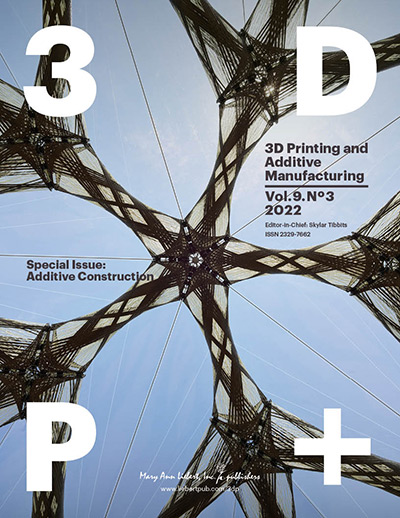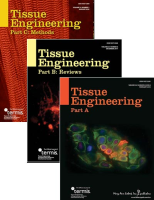Aims & Scope
3D Printing and Additive Manufacturing is the only peer-reviewed journal on the rapidly moving field of 3D printing and related technologies. The Journal provides comprehensive coverage of academic research and industrial and commercial developments that have applications in medicine, education, food, and architecture. It also explores emerging challenges and opportunities ranging from new developments of processes and materials, to new simulation and design tools, and informative applications and case studies.
The Journal addresses the important questions surrounding this powerful and growing field, including issues in policy and law, intellectual property, data standards, safety and liability, environmental impact, social, economic, and humanitarian implications, and emerging business models at the industrial and consumer scales.
3D Printing and Additive Manufacturing coverage includes:
- Novel additive manufacturing processes and techniques
- Improvements of established methods and materials
- Modeling and simulation of additive manufacturing processes
- New materials, meta-materials, digital materials, lattices, and multi-material printing
- Active and electronic materials fabrication
- Hybrid additive and conventional manufacturing
- Medical applications of 3D printing and bio-printing
- Application of 3D printing in education
- Advanced methods in product lifecycle design, testing and adaptation
- Material mechanical properties, solidification processes for powders, liquids, and solids
- Rapid tooling, remote manufacturing
- Economic and social, and humanitarian considerations of democratizing manufacturing
- Advances in personal 3D Printers and consumer adoption
- Mass customization, new business models
- Material performance standards and data exchange formats
3D Printing and Additive Manufacturing is under the editorial leadership of Editor-in-Chief Skylar Tibbits, MS, MS, BArch, Director of MIT’s Self-Assembly Lab and faculty at MIT’s Department of Architecture. View the entire editorial board.
Audience: Engineers, software developers, architects, lawyers, Deans and academic chairpersons of engineering and business schools, technology transfer specialists, chief research officers and vice presidents of research in government, industry, and academia, medical professionals, venture capitalists, and entrepreneurs, among others.
Indexing/Abstracting:
- PubMed Central
- Web of Science: Science Citation Index Expanded™ (SCIE)
- Scopus
- Current Contents®/Engineering, Computing & Technology
- Journal Citation Reports/Science Edition
- EMBiology



